
‘Andy Milligan was born in St. Paul, Minnesota on February 12, 1929. He was a self-taught film maker, playwright, script writer and costume designer. He grew up mostly in Minnesota, but he and his family moved around the country a lot. His father, Andrew Milligan Sr. (1895-1985) was a captain in the U.S. Army who served in the military for over 50 years (retiring in the mid 1960s holding the rank of colonel). His mother, Marie Gladys Hull (1903-1953), was an overweight, neurotic-bipolar alcoholic who physically and verbally abused her husband and children. She served as the basis for scores of her son’s characters when he began making films. Milligan had an older half-brother named Harley Hull and a younger sister named Louise Milligan Howe. After finishing grade school, Milligan joined the U.S. Navy where he served four years. After his honorable discharge, he settled in New York City in 1951 where he dabbled in acting on stage and opened a dress shop.
‘During the 1950s Milligan became involved in the nascent off-off-Broadway theater movement where he mounted productions of plays by Lord Dunsany and Jean Genet at the Caffe Cino, a small Greenwich Village coffeehouse that served as a hothouse for rising theater talent like Lanford Wilson, Tom Eyen and John Guare. Milligan also became involved with directing low-key theater productions at Cafe La Ma Ma Experimental Theater Club. During this period he operated and designed for a clothing boutique named Ad Lib and used his crude dressmaking skills to costume many theatrical productions.
‘In the early 1960s Milligan turned to film making. He met some of the actors for his early films at Caffe Cino. His first released film was a 30-minute black-and-white 16 mm short drama entitled Vapors (1965). Set in the notorious gay bathhouse St. Mark’s Baths, it was written by Hope Stansbury, the raven-haired beauty who would star in a few of his later films. The film, set on one Friday evening in the St. Mark’s Baths, portrays an emotionally awkward and unconsummated meeting between two strangers. Milligan was later employed by producers of exploitation films, particularly William Mishkin, to direct softcore sexploitation and horror features, many featuring actors known from the off-off Broadway theater community.
‘Milligan then hooked up with famed sexploitation producer William Mishkin and made 11 features, all shot with a single hand-held 16mm Auricon camera on short ends (snippets of film left over from other productions). Some of those include Depraved! (1967), Seeds (1968) (“Sown in Incest! Harvested in Hate!”) and Fleshpot on 42nd Street (1973). Many of these early works play like bizarre morality tales where sleazy characters get violently paid back for their excesses.
‘In 1966, Milligan set up shop in a Victorian mansion located on northern Staten Island, within walking distance of the ferry and his own house. The house soon became “Hollywood central,” where he filmed most of his movies on budgets ranging from $5,000 to $20,000. Milligan was a one-man army–he wrote, directed, built sets and sewed costumes for his splatter epics like The Ghastly Ones (1968). His usual “stock company” (Stansbury, Neil Flanagan, Hal Borske) was often supplemented by Staten Island locals who were dragged into performing.
‘Milligan even married one of his actresses, Candy Hammond, who starred in a number of his films, most notably as Pussy Johnson in Gutter Trash (1969). No one took the wedding seriously, because Milligan was unabashedly homosexual and an avowed misogynist. The service took place at the Staten Island house, which was still decorated for the movie shoot Seeds. That night, Milligan cruised gay bars to celebrate.
‘In 1968, Milligan began to make horror movies featuring gore effects with The Ghastly Ones (1968), a 19th century period piece and his first color film which was produced by JER and titled by Sam Sherman. In 1969, he made his next horror movie, Torture Dungeon (1970), a medieval period piece after which he moved to London, England to make movies there after having made a deal with producer Leslie Elliot. After directing Nightbirds (1970) in London, his partnership with Elliot collapsed as he was working on The Body Beneath (1970). Milligan then teamed up again with William Mishkin again where Mishkin produced and Milligan directed three more period piece British horror films which were Bloodthirsty Butchers (1970), The Man with Two Heads (1972), and The Rats Are Coming! The Werewolves Are Here! (1972) (all shot in 1969) before Milligan’s return to Staten Island in 1970.
‘On his return to New York, Milligan wrote and directed another medieval period piece titled Guru, the Mad Monk (1970), which was shot for the first time with a 35mm Arriflex camera and filmed entirely inside a Chelsea, Manhattan church. This movie was released on a double feature with The Body Beneath. Through the next years, Mishkin released Milligan’s British-made pictures, some with additional scenes shot in New York. The Rats are Coming! The Werewolves are Here! was one of Mishkin’s films in which he had Milligan insert new killer rat scenes shot in New York, mostly at his new Staten Island house on Corson Street where Milligan lived during that time and filmed another horror period piece there in 1973 which was titled Blood (1973).
‘After directing the 1972 sexploitation drama Fleshpot on 42nd Street (1973), Milligan’s output was restricted mostly to gory horror movies as he moved to the southern tip of Staten Island in the Tottenville neighborhood where he lived in and owned and operated a dilapidated hotel located at the end of Main Street right next to the southern end of Staten Island Railway.
‘In October 1977, Milligan moved into 335 West 39th Street in Manhattan (a four-story building purchased for $50,000 by Milligan and stockholders), where he founded and ran the Troupe Theater, a seedy but fun off-off Broadway venue above which he lived in a third-floor loft until he left New York City for good in March 1985. He moved to Los Angeles, California, where he shot three more contemporary horror movies between 1987 and 1988 as well as operated another theater company, called the Troupe West, which ran until 1990.
‘Andy Milligan was heavily into S&M and had very few serious relationships (all with men). The few friends he did have were just as emotionally troubled and dangerously disturbed as he was. A Vietnam veteran and ex-convict named Dennis Malvasi, who once drifted into and worked at Andy’s Troupe Theater in the late 1970s and early 1980s, later made news headlines in March 2001 when he and his wife were arrested for aiding the flight of fugitive James Kopp, the suspected murderer of a New York abortion doctor. One boyfriend, “human toothpick” B. Wayne Keeton (so-named for his gaunt physical build), was a good natured Louisiana hustler who appeared in a small role in Monstrosity (1987), one of Milligan’s last films. Keeton’s death from AIDS in June 1989 hit Milligan hard, and he soon began having his own health problems. He learned shortly afterwards that he, too, had contracted AIDS, apparently from Keeton. With no insurance, little money, and the era of exploitation films over, Andy Milligan went into a reclusive decline until his death on June 3, 1991 at age 62.’ — Dennis Dermody
____
Stills
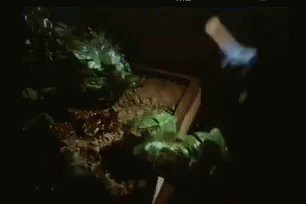
















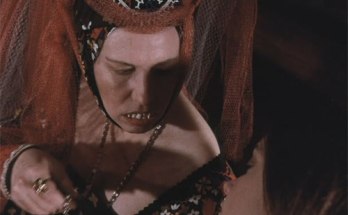







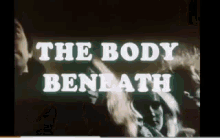






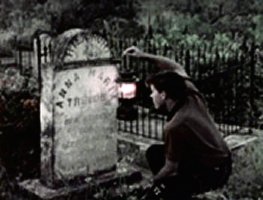
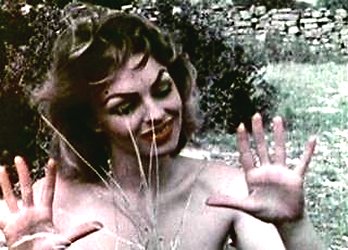
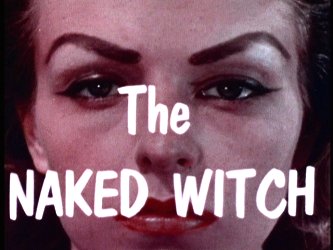



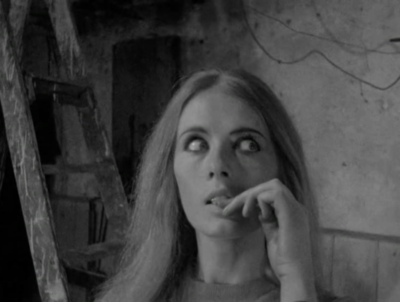
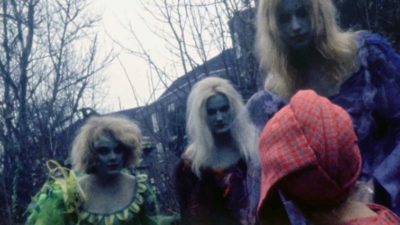
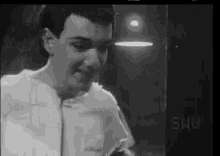



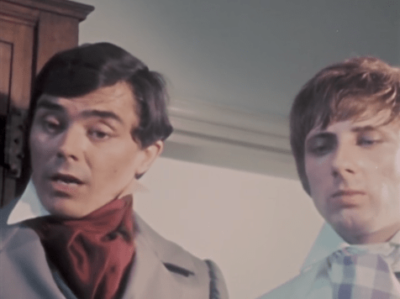
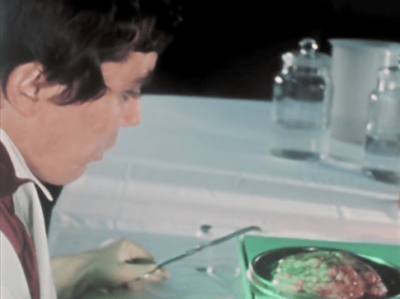






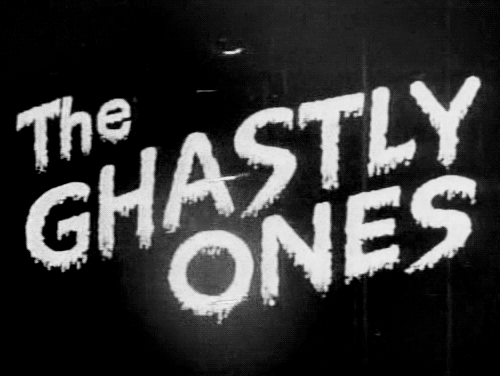

____
Further
Andy Milligan @ IMDb
Robert Patrick’s Andy Milligan page
A CELEBRATION OF HATE: THE HORROR FILMS OF ANDY MILLIGAN
Cinefear: Andy Milligan
Book: ‘The Ghastly One: The Sex-Gore Netherworld of Filmmaker Andy Milligan’
Nicolas Winding Refn: My obsession with Andy Milligan’s cult horror movies
Garagehouse Pictures Releases a Double Dose of Andy Milligan
Exploitation Films and Success: The Half-Told Melodramas of Andy Milligan
A GORY TALE OF TERROR!
Andy Milligan: Avant-Garde Filmmaker?
Andy Milligan @ MUBI
Book: ‘Gutter Auteur: The Films of Andy Milligan’
Theatre of Pain: Andy Milligan’s Bloodthirsty Butchers
Andy Milligan is ruining me: A trash film fan finally meets his match
Sex-Gore Netherworld: Nightbirds & The Body Beneath Disinterred
____
Extras
Miskatonic Institute of Horror Studies: Andy Milligan: Artist, Auteur or Asshole?
Andy Milligan Exploitation Gallery with music by Hal Borske
_______
Interview with Andy Milligan biographer Jimmy McDonough
from Plan 9 Crunch

1) How much of an influence did Cafe Cino have on the evolution of grindhouse (42nd St.) cinema and eventually on mainstream cinema?
McDonough: I’m not sure it had any influence on 42nd Street. It had a great deal of influence on Andy, though. Freedom. It gave him the license to create. And to make flesh certain fantasies lurking in his mind. Very powerful, that. If I had a time machine that is one place I’d go back to…the Cino, to watch one of Milligan’s productions. Better yet, watching Andy watching of his productions. See those beady little eyes dancing as he utters a low, evil chuckle, all while watching a couple of actors beat up on one another. I think the Cino days held great promise for Andy. He had a big framed picture of Joe Cino, an unusually sentimental thing for Milligan. I still have it.”
2) Why didn’t Andy Milligan, in your opinion, make it out of the grindhouses as a director, given that he had more critical success at Cafe Cino and as an off-Broadway theater director?
McDonough: “He was self-destructive. Milligan refused to tailor his act for anybody. He was incapable of it. And Andy could be an angry, angry guy. It scared people. Producer William Mishkin was the only one who could deal with Andy for more than a picture or two, and even that relationship was fraught with tension. Mishkin gave him the opportunity to make movies, but it was never financially rewarding enough to lead anywhere. The limitations were always the same–and primarily it was, “make it for nothing.” Bill was a very cautious individual who wanted to see a return for every dollar spent. Andy was caught in a trick bag, stuck on the Mishkin plantation. All he could do was grind out one cheapo film after another. Eventually he burned out and grew very bitter about it all.”
3) There seems to be mixed accounts as to whether or not Milligan actually made some of his films in England. One individual told us that he did not make any of his films there. Can you somehow confirm if Milligan did/did not make any of his films in England? What evidence or information do you have to suggest that Milligan did indeed film in England?
McDonough: Didn’t make any films in England?!? You can’t be serious. What poppycock. Is this the same “individual” who goes around claiming Andy wasn’t homosexual? Bloodthirsty Butchers, The Body Beneath, Nightbirds, The Man with Two Heads, The Rats Are Coming… were all shot in England (parts of Rats were shot on Staten Island). The English estate where Milligan shot Body Beneath and Rats–do you think that’s a set? Done with CGI? All the overseas actors–Berwick Kaler, Julie Shaw, Annabella Wood, Dennis DeMarne, so many others–did Andy fly them all to Staten Island? He didn’t have enough in the budget to buy the crew coffee! You read the book, right? Reliable witnesses like John Borske and John Miranda are quoted about working with Andy overseas. Andy HIMSELF talks about living and working in England. He made films for an English producer, Leslie Elliot, also quoted in the book. Are they liars? Did I make it all up? What would be the point of such a conspiracy, anyway?”
4) What are your thoughts as to whether or not Milligan will ever achieve the cult status of someone like Ed Wood? Could Milligan ever achieve the same status as Wood, and could you envision Hollywood ever making a big budget film of his life, like Tim Burton did of Ed Wood? If Milligan will never achieve the status of Ed Wood, why is this?
McDonough: There was a certain innocence about Ed Wood (however angora-swathed) Milligan never had. Andy comes from a grimier, more recent time. He kind of picks up where Wood left off. Every week I get more and more mail about Andy. So something is happening, however tiny. Much to my amusement, there has been talk of a film of The Ghastly One, but I don’t see how that particular environment could ever be replicated. Maybe in England. Don’t tell anybody!”
5). In your own view, what is it specifically that makes Milligan films so sought after by cult film fans? What is his appeal to you as a writer?
McDonough: You know how there are these utterly obscure 45s that record fanatics savor? Some nobody–let’s call him Herman–cuts a few great records at midnight in the back of a radio station and only 500 copies slip out to the world. Herman doesn’t make a dime, works his entire life as a high school custodian, then dies of cirrosis of the liver at his Mom’s house. Twenty years later he has a fan club in Sweden and the French are writing books about him. Suddenly Herman’s got a cult! It may only be twenty-six people, but they’re willing to die for the guy. Why? Who knows. Something in what Herman did struck a chord within these few. And if one person catches the virus, it’s a given somebody else will get it, too. That’s one of the few things that makes life bearable: sharing a movie or a book or a song with another person. Suddenly you’re not alone. Everything’s so homogenized these days, it’s like it all comes out of the same fast-food vat. Movies are so slick, TV is all the same reality show, the radio’s filled with songs that have been AutoTuned free of emotion. There’s no use crying about it, that’s just the way things work. The Model T turns into the PT Cruiser. You can’t escape it. Andy is a refreshing antidote to all that. His is a timeless world, a dirty aquarium swimming with threadbare thespians in outlandish costumery, all of them ranting and raving the Milligan world view. Within seconds you know where you are, and it isn’t pretty. There’s something so original, so crackpot about the vision. For better and for worse, there’s nothing remotely like it. Andy’s movies are looking better and better as the years go by. I think I was too hard on his films in the book. That’s the only thing I regret about The Ghastly One. What appeals to me most of all is that Milligan did it against all odds. People laughed at him, told him he was no good. He kept right on going. Make no mistake, Andy was an artist. You may think his art is something that should be scraped off the bottom of your shoe, but he was a true artist until the bitter end. One of the many reasons I admired him.”
6) Milligan is noted for his “swirl technique” in early films, as well as long shots and facial closeups. Is this all due to the limitations and weight advantages, of an Auricon, or did he have his own style techniques that he deliberately used?
McDonough: “I think it was a combination plate. Andy couldn’t be bothered by technical things, even the simplest adjustments that would’ve made his films a thousand times more bearable. The guy had no patience. Try to show him a different way of doing anything and he went berserk. Yes, he was affected by the limitations of his equipment, but primarily he was driven by emotions that way were beyond his control. Andy was a walking, talking ‘swirl camera.’ So that seeped out of his fingers and through the 16mm Auricon. His 35mm pictures are more earthbound. You couldn’t ‘swirl’ that tank.”
7) I was watching Tom Vazzo on a GURU DVD extra talking about working with Milligan’s later films. He has little nice to say about Milligan’s film-making. You were there for a couple of films. I’d like you to relate some positives of Milligan’s skills that showed up even in a film such as Monstrosity?
McDonough: “You can’t judge Andy by Hollywood (or even ‘Independent Filmmaker’) standards. He existed in a creepy little snowglobe all his own. Milligan made pictures for no money. NO MONEY. Anybody who’s worked in the film business knows how hard it is to make a movie, particularly if you’re a one man band like Milligan. There was something heroic in the way he did it. And he swept you up in the enthusiasm. It was the best fun ever. I wish you could’ve been there. I worked on big budget Hollywood pictures and it was a total bore. With Andy it was always total lunacy. Whenever I get together with Charlie Beesley, my primary cohort from those days, we end up doing impressions of Andy–or his much-beloved ‘script girl’ Frank Echols, who was always rolling his eyes at whatever atrocious faux pas Milligan had just committed. Honestly, I think of those times and I laugh out loud. Some of the happiest days of my life, working for Andy.
8) In The Ghastly One, you describe Milligan as an ill-tempered misanthrope capable of tantrums and vilifications, yet your affection for the man comes through in a genuine manner. Explain this paradox. How could someone who pushed so many people away from him be so well liked by you and others?
McDonough: Explain? I don’t think I can. My job as biographer is to evoke, not explain. Cantankerous, complex characters deserve friends, too. I’ve spent my life around them, and apparently I am one. Andy could be screaming about shooting drag queens one minute and then turn around and do something so kind and gentle you’d do a double-take. Not many people saw this side of him, but it was there. Not a day goes by that I don’t think of Andy. I still wear the cowboy boots he gave me. I still have the cowboy shirts he made for me. And they still reek of his scent, which, I must tell you, is quite unforgettable. Eau d’ Milligan!”
9) Why were Milligan and other grindhouse filmmakers so easily manipulated and exploited by people such as the Mishkins, etc. Did they have any legal recourses they could have used?
McDonough: “I think a loaded gun would’ve worked much better. Those days were like the wild west. A handful of people held the power on 42nd Street. They controlled what played there. You wanted to play your pitiful little picture there, fine, but bend over first. A handful of distributors were savvy enough to swim in this shark tank and William Mishkin was one of them. He was the filter between Andy and the powers that be. Once Milligan lost Mishkin, it was really over for him. No way was he going to deal with somebody like Bingo Brandt and emerge without his feathers. I have a lot of respect for William Mishkin. Did he treat Andy as good as he could’ve? Probably not. But they made a lot of pictures together. And those lurid campaigns we all love came from Bill’s feverish mind, nowhere else. In terms of exploitations campaigns the guy was a genius. I love the posters and pressbooks for Milligan’s pictures as much as the movies themselves.”
10) Do you think any “lost” Milligan films, such as The Naked Witch and “The Degenerates,” might have prints that are still lurking out there somewhere?
McDonough: “You never know. I think I might’ve just located a 16mm reel that I believe is from “Depraved.”
Last question: If you have any box office information on Milligan’s films, we’d love to share that info on the blog. Also, any chance of a release of Nightbirds some day? (It took us a long time to find Torture Dungeon, Blood and Legacy of Horror, and I’m not sure the last two were worth it!
McDonough: “(I’m) happy that my collection of Milligan films now resides with the noted Danish director Nicolas Winding Refn and he plans on releasing them on DVD. Mr. Refn is just the man for the job. He loves all things Milligan and I know he’ll do a great job with it all. A huge relief, that.” Editor’s Note: “Nightbirds” was released in 2012 by BFI DVD’s Flip Side label with “The Body Beneath” and extras.
____________
16 of Andy Milligan’s 29 films
___________
Vapors (1965)
‘1965: Mr. Jaffee is a curious but closeted married man, who decides to take a walk on the wild side one night over to the local bath house located in Times Square, New York. When he is a approached by Thomas, a swinging regular who takes an interest in Mr. Jaffe as the new face “on the scene”, a deep and philosophical discussion about marriage, homosexuality and other social taboos begins to unexpectedly unfold. The two become emotionally intimate in a very short time, with no sexual contact of any sort, while everyone around them are screwing like rabbits.’ — letterboxd
the entire film
______________
Compass Rose (1967)
‘Compass Rose doesn’t get the best rep among Milligan fans and for good reason. Andy even hated the film himself. Joe Bush’s script is too pretentious, painfully annoying characters and way too many in-jokes. But despite the film’s downfalls and horrific sound, it does offer a glimpse into Milligan’s lost sexploitation films. The standard storyline elements and b&w photography of such titles as Filthy Five and Gutter Trash are all here. Not to mention drugs, suicide, a whirligig orgy and a moralistic storyline that all leads up to wonderfully Milligan ending complete with S&M. So for those who want something close to Naked Witch or Depraved (besides the two existing ones), Compass Rose will fuel your hunger for things long lost.’ — Alex
the entire film
______________
The Ghastly Ones (1968)
‘Opening with a completely unrelated massacre of a couple by wide-eyed Milligan cohort Hal Borske and his trusty meat cleaver (complete with eye gouging, amputation, and inept gore galore), THE GHASTLY ONES starts off with a bang before settling into a family reunion from hell set to a snail’s pace. Three sisters from different walks of life reunite when their father passes away and are told by the family lawyer (a completely unrecognizable Neil Flanagan, GURU THE MAD MONK himself) that they will only inherit any money from their father’s will if they spend an entire weekend in “sexual bliss” at the family mansion. Welcoming the trio are British maid Martha, lady of the house Hattie (the incomparable Maggie Rogers), and resident idiot Colin (Borske, now with fake teeth poking out of his mouth). But also hiding in the basement is a hooded killer who methodically kills off the sisters and their husbands with pitchforks, butcher knives, and the requisite meat cleaver.If you’ve never seen an Andy Milligan film, this would be a good place to start. It’s filled with all the typical Milligan ingredients: bitchy relatives, stereotypical heterosexual romances, shaky hand-held 16mm camerawork, muffled soundtrack punctuated by needle-drop library music cues, able actors trying their best with terrible dialogue, with dripping blood, ugly sex and nudity, and garish set design, all rolled into a feature-length monstrosity.’ — Casey Scott
Trailer
______________
Seeds of Sin (1968)
‘In SEEDS, a family reunion over Christmas reignites long simmering tensions and rekindles dangerous sexual affairs. But, as buried secrets are revealed, a mysterious killer begins murdering the perverse family members one by one in increasingly sadistic ways…’ — Vinegar Syndrome
Excerpt
Excerpt
_______________
Torture Dungeon (1970)
‘I’m a bit mystified by exploitation auteur Andy Milligan’s Torture Dungeon. It’s got all the trademarks of Milligan’s work, including bizarre, wobbly camerawork, home-made period costumes, a micro-budget, some blood and some nudity. But if shoehorning a film into a genre is a required thing, what genre is this odd, nasty little work? With a title like Torture Dungeon, I can only imagine it was distributed to the drive-ins and grindhouses – or wherever it played – as a gore-filled horror film akin to a Herschell Gordon Lewis epic like Blood Feast. Yet, there isn’t all that much gore in this dungeon, what we have on our hands resembles more a violent historical play done in the inimitable Milligan style. For sheer uniqueness, the works of Andy Milligan are worth a view and Torture Dungeon is no exception. It’s almost the Milligan take on Macbeth, and we certainly experience a poisoned view of the world through the director’s eyes. The acting is over the top for some characters, particularly Gerald Jacuzzo as the seizure-riddled, hedonistically evil Norman. Richard Mason as Ivan the hunchback is grating and manic with his constant jumping around and giggling, we can only assume he’s acting as directed. The rest of the cast are more-or-less serious, and do their best. Milligan’s costumes are actually quite impressive to this untrained eye, and they make up for the lack of sets on display. I can’t even remember a scene with any sets in it!’ — Boris Lugosi
Excerpt
Excerpt
Excerpt
________________
The Body Beneath (1970)
‘Hammer Films never hired John Waters to make a vampire soap opera for $10 starring bowling alley clerks instead of Christopher Lee and Peter Cushing. But if they had, it would be known as THE BODY BENEATH. Reverend Ford is a Catholic priest who is also a vampire. With the help of his hunchback assistant and a gang of green-faced lady vamps, Ford seeks to extend his lineage by any means possible. This includes sticking sewing needles in people’s eyes. Filmed “in the graveyards of England” by legendary queer filmmaker Andy Milligan, THE BODY BENEATH is dreamy, nihilistic horror that exists in a space-time continuum known only to itself.’ — Joseph A. Ziemba
Trailer
_________________
Guru the Mad Monk (1970)
‘With a reported cost of $11,000, it was one of Milligan’s better-funded productions (don’t laugh!), and it was his first to be shot on 35mm film with theoretically professional-grade audio. However, Guru the Mad Monk is also the movie that Milligan himself identified as the worst he ever made. Let me reiterate, to make sure the full magnitude of that statement sinks in: Guru is the Andy Milligan movie that Andy Milligan thought was awful!’ — Scott Ashlin
Trailer
the entire film
_______________
Nightbirds (1970)
‘As with Vapors, it’s essentially another two-hander. Unlike that tender debut, the central relationship is straight… and twisted. Worldly, manipulative Dee (Julie Shaw) picks up homeless, virginal Dink (Berwick Kaler) while the latter is vomiting on the pavement. She moves him into her barely furnished Commercial Street flat, where a creepy landlord implies the method of paying rent. Milligan’s trusty Auricon pulls tight focus on the nascent couple as their initial attempts to play house curdle into a tragically imbalanced power dynamic. Dee’s layers of mendacity are steadily peeled back, the taut narrative assuming an inexorable downward spiral for Dink (cue one of the director’s signature ‘swirl camera’ climaxes). Candid for the time, though decidedly unerotic, Nightbirds’ wicked woman/hapless man paradigm is indelible childhood residue: Milligan simply despised his volatile, abusive mother. Hence the unabashed misogyny which consumes much of his output like a red-raw wound. For her part, Shaw inhabits the icy toxic blonde with real verve, though she understandably baulked at a scene of animal cruelty alluded to by the working title Pigeons (needless to say, Milligan executed this nasty business himself). Surprisingly, the actress appeared in little else of note.’ — Manish Agarwal
Trailer
_______________
The Rats Are Coming! The Werewolves Are Here! (1972)
‘The Rats Are Coming! The Werewolves Are Here! is nowhere near as good as its title, and it’s nowhere near as sleazy, gory or filthy as some of Milligan’s other movies. I saw it on TV as a kid and was shocked to discover on a recent rewatch* that not much had been edited out of the movie. I had always assumed the film had been cut to ribbons for broadcast, but the reality is that not much happens in the movie – except for some really repulsive true-life mutilation of a mouse. Most of Milligan’s films were shot in Staten Island (at his own home), but Rats is one of a handful that was shot in England. I’m not sure how you would tell the difference; there are almost no exterior shots, and most of those are in a generic backyard (there is one amazing street scene where we see cars reflected in windows of shops – this is a movie set in the late 1800s).’ — collaged
Trailer
Excerpt
________________
The Man with Two Heads (1972)
‘The performances in The Man with Two Heads is actually perfectly serviceable. No-one fluffs their lines and Denis DeMarne, trusted with both Jekyll and, naturally, Blood, is perfectly serviceable in the role. His later regular appearances on British television programmes posits him exactly where he is – an actor at the beginning of his career dealing with material politely deemed “thin”. The film is hampered by Milligan’s regular flaws: a murderous overuse of stock music drowning out the actors’ dialogue; poor sound editing and recording, meaning everything seems to have a slight echo.’ — HORRORPEDIA
the entire film
_______________
Fleshpot on 42nd Street (1973)
‘Andy Milligan’s bumpy partnership with famed NYC sleaze peddler William Mishkin, Fleshpot on 42nd Street is considered by many (relatively speaking) to be one of the director’s best films and a surprising change of pace from his preceding programmers like Bloodthirsty Butchers and Torture Dungeon (both of which get a shout out here). More of a throwback to Milligan’s startling early short film Vapors, it’s a grungy and surprisingly affecting look at Times Square just as the last wisps of the Love Generation had faded away. Sporting a cast comprised of East Coast adult film up and comers and members of Milligan’s own stock company, it’s been a bit of a mystery title for years with prints of varying lengths floating around and the advertising of two different versions indicating that it was originally shot in a hardcore variant. As it turns out, that latter assumption was more or less correct, though this is about as far from a porno chic title as you can get.’ — Mondo Digital
Excerpt
Excerpt
___________
Blood! (1974)
‘In this transmission Milligan just barely establishes a monster-movie frame before getting down to what he’s really interested in: barriers of politeness breaking down between people as conversation devolves to name-calling, bile-spewing, and pure, unfiltered hate. This is guaranteed to be the only sequel to The Wolf Man in which Lawrence Talbot Jr. nearly throttles his banker to death for making bad investments with his deceased father’s money. To be fair, Larry may have been on edge after the lengthy and detailed amount of time he spent signing a lease with a nosy realtor earlier in the week (they say it’s a renter’s economy). Or perhaps he was taking out the stress of being married to Dracula’s daughter, or some residual humiliation at his lack of desire for her the night before in bed? In Milligan’s world being a monster isn’t tragic. It’s depressing and a constant source of malaise.’ — laird
the entire film
_____________
Legacy of Horror (1978)
‘Released the same year as Halloween, Milligan’s descent into exhaustion — artistically and personally — begins with Legacy Of Horror. Merely an unmemorable remake of The Ghastly Ones, Legacy is best left misunderstood. Three couples, placed somewhere between 1900 and 1960, mumble and eat plants. The expected token retard-handyman is thrown over a bridge. At 37 minutes, the characters convene for a reading of the ol’ “sexual harmony” will, but there’s no sex. At 60 minutes, a black-clad killer dishes out split second maimings, but there’s no bloodshed. As a result, there’s no hope. The least spiteful film in Milligan’s resume, Legacy Of Horror leaves no mark, save for a few spots of well-placed humor (check out Mr. Ito!). Intentioned weirdness seems suspicious. There’s an obvious hope that the film’s irrational moments will gel together naturally. They don’t.’ — Bleeding Skull
the entire film
____________
Carnage (1984)
‘Carnage is not a film that everyone needs to see. It’s padded with establishing shots of Milligan’s Staten Island home and conversations between inconsequential people. There are long sequences of Carol sitting in a chair and drinking wine. There’s a housewarming party with a very long toast. The camera is stuck on a tripod and left for dead. But I can’t dismiss the film. The lack of vitality may be a problem, but Milligan’s cynicism is always present. And always hilarious. If Carnage was cut down to 60 minutes, like Milligan’s earlier Blood, I’d be beside myself with joy. As is, this film is for a very select group of people. People who can appreciate a cheap-ass horror film with dialogue penned by a nihilist who would rather be punching a relative than making a movie.’ — Bleeding Skull
Trailer
the entire film
______________
The Weirdo (1989)
‘Twenty five years in the biz and Milligan still didn’t understand eyelines. Absolute legend. The part where the weirdo cuts off both of the bully’s hands with a switchblade and then is having a tender moment with his girlfriend while agonized wailing is barely audible in the mix is honestly one of the most chilling things I’ve ever seen in a movie.’ — Gregory Joseph
Excerpt
_______________
Surgikill (1989)
‘Andy Milligan’s last gasp before he bought the farm was this criminally unamusing slasher-genre lampoon which finds a hospital violently beset by an unidentified serial killer. The eccentric but loyal staff does everything possible to keep the situation under wraps while a bumbling police investigation is underway. This painfully unfunny dark-humor pasquinade won’t likely appease the small-but-avid coterie of Andy Milligan enthusiasts. In most cases, Milligan’s monogram directorial flourishes evince a bizarre, dissentient singularity…an unpremeditated aspect with considerable appeal to a niche viewership. Critically speaking, these films are indisputably wretched. To a discriminate audience, however, they transcend critical assay by virtue of their waywardly off-center peculiarities. SURGIKILL is lacking in this distinction, however, as failed attempts at comedy rarely outshine their deficiencies with abstract or specious incidental charm. This film is an improficient blaze of inanity which is entirely non-evident of professionalism in any facet of its lazy fructification. Quite simply put, SURGIKILL is possibly the worst comedy I have ever seen. An unfortunate final coda to a career as diacritic and fascinating as it was inglorious.’ — EyeAskance
Excerpts
*
p.s. Hey. In addition to Blu-ray and DVD, PERMANENT GREEN LIGHT is also now VOD on Amazon Prime and Vimeo in North America. Appropriate links to your right. ** Shane Christmass, Hi, Shane. Surely, the DVDs can go to Australia. I think you just need a player that accepts the NA format. Cool about your friend in Glasgow digging the film. Yes, I’ve read ‘The Suiciders’. It’s excellent. I’m pretty good at keeping up with Travis’s work. If your brain makes you barrel into the new one while polishing off the extant one, so be it, obviously. That’s certainly happened to me too. Great news! ** David Ehrenstein, Hi. Of course. Suicide remain a touchstone cultural music unit all these years later. I’ve paid zero attention to the MET Gala, but I definitely take your word for it. ** _Black_Acrylic, Hi, Ben. Thanks again for the emailing and help with the post construction. Wow, that’s an impressive turn out, and a nice, tidy overview there. Everyone, You can watch the entirety of last weekend’s giant Scottish Independence march in Glasgow in 39 seconds. How is that possible? Find out. ** Steve Erickson, Hm. Well, that does make me a little more interested to see it. Okay, should I get the chance, I will. Interesting. ** Misanthrope, Jeez, when you describe LPS’s weird behaviour, it almost feels like there’s a method to his madness, but I’m beginning to think not and that he thinks his bizarrely great luck so far is destiny or something. I’m painfully reminded of a young friend of mine from years ago, Ziggy, who inspired the character ‘Ziggy’ in ‘Try’. He fucked up in school and with a lot of things, and he barely got away with it for a long time because he was charming, smart, and, in his case, very good looking, but his luck totally ran out when he reached adulthood. Now he’s a crazy homeless guy living on the streets of Portland. Not to say I think that’s LPS’s fate, but maybe it’s a cautionary tale. ** Armando, Hi. Glad you liked him/it. No, I would say Blanchot’s my writer dude if I had too choose one. ‘Warp and Woof’ is fantastic and genius, of course! Glasgow was good. Screening was great, and I was happy to have a couple of days to get to know the city. Yes, sorry to be slow, email-wise. Things are crazily busy right now with the film release and other stuff, more over-busy than even usual, so I’m way behind. I will get to your email ASAP. Nobody can write like Derek McCormack. He is a singular genius guy. No, ‘LDP’ wasn’t the big influence on ‘PGL’ that a few people seem to think, I guess because of the common ‘suicide’ thematic, but our thing is very different. We honestly weren’t thinking of any other directors or films when we wrote and made ours. We wanted to do something that was completely ours. Influences are influences, and people/critics always want to start by trying to identify ‘influences’ when they see something new, but I don’t think starting with seeming influences is a good way to enter our film. So you enter the big C tomorrow? Enjoy the living heck out of your trip, pal. ** Okay. Do you know the films of the oddball film director Andy Milligan? If not, you can begin to by attending today’s post. See you tomorrow.




 Now available in North America
Now available in North America 
Yep – just check, Amazon can deliver to Australia. I’m in!
Actually I realised after I had posted that you had published ‘Victims’ – so of course you had read ‘Suiciders’. I read ‘Victims’ only a few years back. ‘Suiciders’ more fragmentary, almost like it’s collapsing in on itself. Oh and it’s hilarious..
Been scoping out Travis’ Instagram – my sort of art.
Have you seen Neutral Spaces?
https://neutralspaces.co/
BTW I think the only ‘Little House on the Bowery’ book I haven’t read was ‘Grab Bag’ – you’ve probably answered this in a 1000 different places previous – but what happened to that series? Still going or ran it’s course?
There’s a considerable cult around Andy Milligan. I’ve only seen “Vapors” as it played the Filmmaker’s Cinematheque when it was located on 41st street. It’s not bad. My friend George Box appeared in a few of his dramatic productions back when he was an Off-Off Broadway actor and also part of Charles Lundlam’s troupe (billed as “Rocky Box”) He’s occasionally pestered by Milligan fans.
There’s a name I haven’t heard in decades. I’m sure I saw a Milligan movie or two, back in the umm 80s in a binge with other HG Lewis, Ed Wood classics, but I can’t remember which.
Perhaps The Naked Witch would be a good double bill with The Nude Vampire? Heh.
Good to hear PGL will be much more widely accessible, Dennis. I’m working on some code for a little gig in a few weeks, but the concert calendar looks intimidatingly distracting through the weekend. Wish me luck.
Bill
Here’s my review of Mary Harron’s CHARLIE SAYS: https://www.gaycitynews.nyc/stories/2019/10/charlie-says-film-2019-05-06-gcn.html
I’ve been thinking of writing an essay on Pete Buttigieg to post on Medium. I don’t find him very interesting as a politician (the more I learn about him, the more it’s clear that he’s an empty centrist and he’s not getting my vote unless he’s facing off against Trump in the general election next year), but the way he’s become the public face of American gayness reveals a lot about what kinds of identity are acceptable here. I don’t blame him for that, or marketing himself as a presidential candidate by emphasizing his Christianity and marital status, and assumptions by leftists that all LGBTQ people have an obligation to be radicals are douchey and another way of putting repressive strictures on us. Still, I hate the way his candidacy is playing into the “gays are normal and boring like everybody else” ethos; I might call the essay “Mayor ‘Normal’ .” Anyway, I ordered his memoir via the NY library, and it arrived today, which is what touched this off.
VAPORS is the only Milligan film I’ve seen, but I understand that it’s much different from his horror work.
Dennis, RE: today’s post…pain inspires/informs so much great Art, no?
I was just thinking about your friend Ziggy this morning. One of my best friends is reading Try now. I gave it to his girlfriend for Christmas. I can’t remember if she’s read it or not. (Needless to say, the uncle in there disturbed him, hahaha, but really, not that much. He was like, “There are really people like that!”) So yeah, I was thinking about my friend reading it this morning and then started thinking about your friend Ziggy. I was thinking, “I wonder whatever happened to that dude.”
Yeah, LPS is just cute enough right now to get away with stuff. But his luck is running out.
He didn’t go to school today, and they called to inform us that he was expelled. But my mom, the biggest enabler ever, actually lied and said he was sick, vomiting and full of diarrhea and would go to the doctor today and have a note (which will excuse the absences). She’s a good woman, but she’s a horrible enabler.
He went to the doc and got a note for yesterday, today, and tomorrow, as well as a referral to a psychiatrist for his anxiety. He’s too happy about the referral. (You know what he’s thinking, right? Xanax! Klonopin! Valium! I suspect he’s already on pills, btw.)
We’ll see if he goes Friday. I think he thinks he can string this out with medical notes -he’ll try this again, I’m sure- and somehow still remain in school.
What’s funny is that his anxiety was all about the other school. Now it’s this one. I don’t know, he should just drop out and get a job. Stop the farce, the charade. This school ain’t no joke and they’ll eventually expel him. I mean, just get it over with.
But I do think that for him it’s some sort of weird control thing. Like, he’s grinning the whole time like, “I can’t believe they’re falling for it and doing what I want.” He was like that at that hearing Friday, almost about to laugh. He was suddenly in control and loving it. He’s the type who, if you said to meet you at 3 p.m., would be sure to get there at 3:15 p.m. or later just to let you know that he does things on his time and nobody else’s and that he’s in control, not you. And then when you didn’t complain or just leave or whatever, he’d be thinking, “I got ‘im.”
Really frustrating to be around.